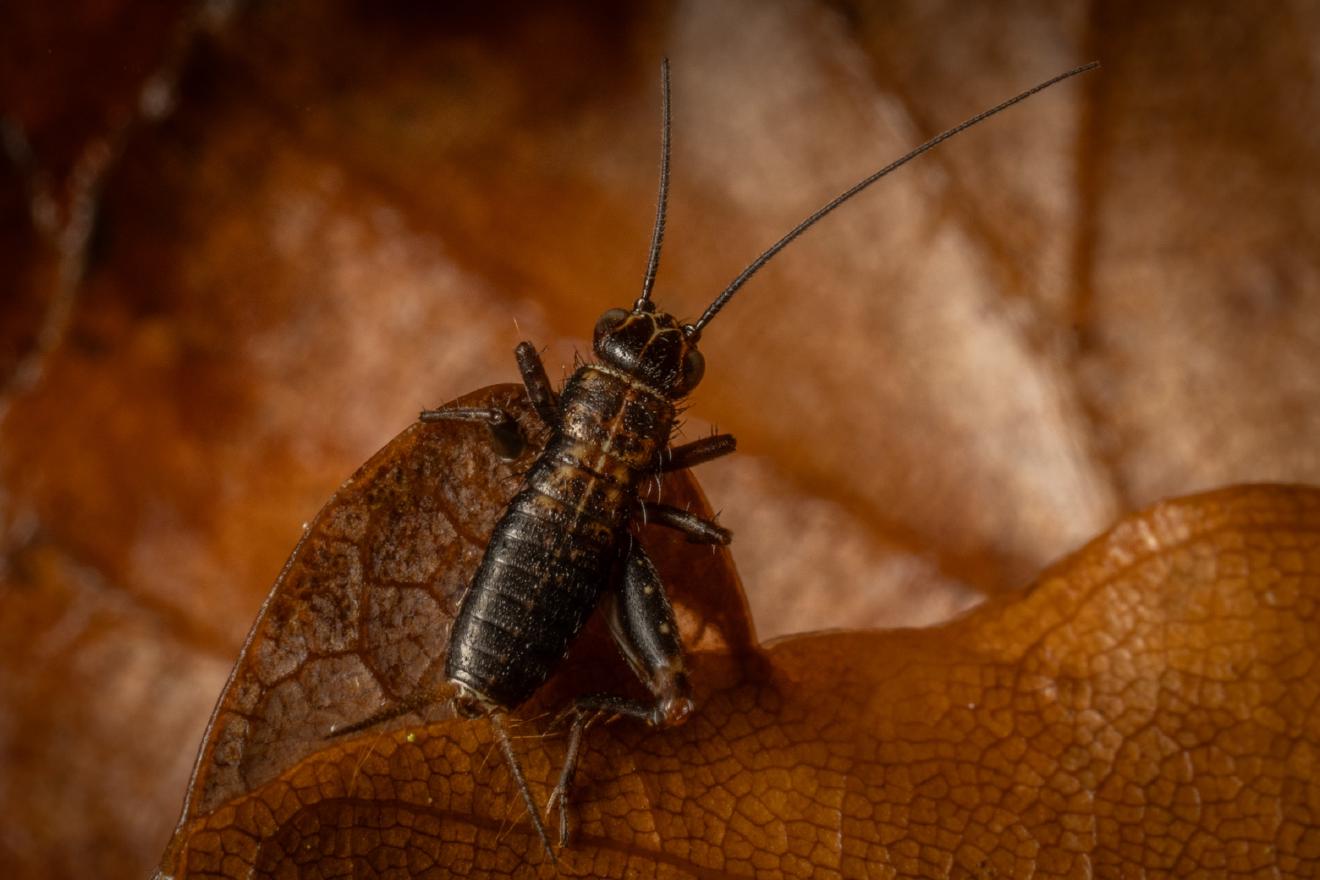Wood Cricket
species of infraorder “Grasshoppers, Crickets, and Katydids“
1 species
The wood cricket is a small, dark brown insect found in Europe and North Africa. It prefers forest edges and woodland clearings, especially those with oak, beech, hazel, and holly trees. It feeds on decaying leaf litter and may consume fungus. Males stridulate (sing) to attract mates, and their call is difficult to locate due to the high number of calling individuals. Wood crickets overwinter as eggs or nymphs and have a lifespan of two years. They have limited dispersal abilities, with males being able to move further than females and nymphs.


Description#
This cricket is a small, dark brown, ground-dwelling, grasshopper-like insect with long, thread-like antennae. It grows to about 1 cm (0.4 in). Neither males nor females have hind wings; in males the fore-wings extend half way along the abdomen, while in females, the fore-wings are reduced to rounded stubs. Females also have a long ovipositor at the tip of the abdomen.
Distribution and habitat#
The wood cricket is native to Europe and North Africa. Its range includes Western, Central and Southern Europe, Corsica, Algeria and Morocco. The natural habitat of this species is forest edges and woodland clearings, where it is associated with oak, beech, hazel and holly trees and with bracken. It thrives among the leaf litter in warm, sunny spots. It is uncommon in Britain, with separate populations in the New Forest, the Isle of Wight and southern Devon. In 2001, following the clearance of coniferous woodland and rhododendron from a site near Offwell in eastern Devon, a new population appeared; the nearest previously known population had been around Harpford, some 11 km (7 mi) away. Surrey’s only population of Wood Cricket (Nemobius sylvestris) exists in Wisley Common following their accidental introduction on delivery of azaleas to Wisley Gardens in 1967.
Ecology#
Wood crickets live among the decaying leaf litter on which they feed. They may also consume the fungus growing among the litter. When the weather is hot enough, males stridulate (sing) during both day and night. The loud two tone call is difficult to pinpoint, especially when several are calling in close proximity. When disturbed, these crickets leap away with their powerful back limbs, or hide in the leaf litter or among low vegetation.Eggs are laid in the leaf litter in summer and autumn and the crickets overwinter as eggs or as nymphs, with the young maturing in June. Unusually for insects in the grasshopper family, wood crickets survive for two years. Being flightless, these crickets are limited in their dispersal abilities; males have been found to disperse over 55 m (180 ft) from the woodland edge but females and nymphs did not move nearly so far. Dispersal along the edge of woodland is more possible.
External links#
Friday Fellow: Wood Cricket at Earthling Nature
The wood cricket is a small, dark brown insect found in Europe and North Africa. It prefers forest edges and woodland clearings, especially those with oak, beech, hazel, and holly trees. It feeds on decaying leaf litter and may consume fungus. Males stridulate (sing) to attract mates, and their call is difficult to locate due to the high number of calling individuals. Wood crickets overwinter as eggs or nymphs and have a lifespan of two years. They have limited dispersal abilities, with males being able to move further than females and nymphs.
Ancestry Graph
Further Information
Copyright

